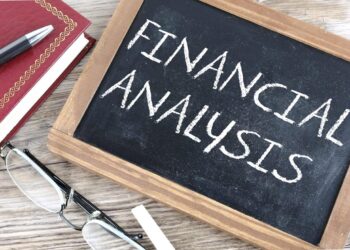The Smartest Ways to Save in 2025 offers a fresh perspective on how to navigate the ever-changing financial landscape. As we step into a new year, it’s crucial to adapt and embrace innovative saving strategies that not only secure your finances but also enhance your lifestyle. With the right techniques and mindset, saving money can transform from a chore into a rewarding habit.
This year, understanding the importance of saving is more vital than ever, especially in light of the current economic climate. By exploring new technologies, budgeting methods, and lifestyle changes, you can find effective ways to boost your savings. Additionally, discovering investment opportunities that align with your saving goals can truly set the stage for a financially secure future.
Understanding the Importance of Saving
In the ever-evolving economic landscape of 2025, understanding the importance of saving money has become paramount for individuals and families alike. As inflation rates fluctuate and living costs rise, making informed financial decisions is essential to securing a stable future. Saving money not only provides a safety net during unforeseen circumstances but also fosters long-term wealth accumulation.
Establishing effective saving strategies offers numerous long-term benefits. A well-structured savings plan can help individuals achieve their financial goals, whether it be purchasing a home, funding education, or preparing for retirement. By prioritizing savings, people can mitigate the stress associated with financial uncertainties and build a foundation for wealth that can be passed down through generations.
Current Economic Climate and Savings Trends
In 2025, various trends have emerged that highlight the changing landscape of savings habits. It is crucial to analyze these trends to understand the implications they have on financial planning.
Statistics reveal that 70% of Americans reported having a savings account, an increase from 63% in 2021. This growth reflects a shift towards prioritizing savings, likely influenced by recent economic challenges. Additionally, data from the Federal Reserve indicates that the average savings rate reached 8.4%, showing that individuals are setting aside a more substantial portion of their income compared to previous years.
Furthermore, younger generations, particularly Millennials and Gen Z, are increasingly embracing digital saving tools and apps. These platforms simplify the savings process, allowing users to automate contributions and track their progress effortlessly. Approximately 65% of young adults utilize budgeting and savings apps, demonstrating a proactive approach to financial management.
“Effective saving strategies can help individuals achieve their financial goals and provide a safety net during unforeseen circumstances.”
Overall, the insights gained from recent savings trends and habits reinforce the notion that saving money is not merely an option but a necessity in today’s economic environment. By understanding and implementing effective saving strategies, individuals can position themselves for a more secure and prosperous future.
Innovative Saving Techniques for 2025: The Smartest Ways To Save In 2025

As we step into 2025, the landscape of personal finance is evolving rapidly, offering individuals new methods and tools to enhance their savings. With technological advancements and fresh approaches to budgeting, it’s easier than ever to take control of your financial future. This segment dives into the innovative techniques that are reshaping the way we save money.
New Apps and Technologies for Saving Money
The rise of digital solutions has paved the way for several apps and tools that simplify the saving process. These innovations not only track spending but also encourage users to save more effectively. Some of the noteworthy apps include:
- Digit: This app automates savings by analyzing your spending habits and moving small amounts of money to a savings account, helping users save without even thinking about it.
- Acorns: Acorns invests spare change from purchases into diversified portfolios, making investing and saving effortless for beginners.
- Qapital: This app allows users to set specific savings goals and creates rules for automatic savings based on personal spending habits.
- Chime: A banking app that offers features like automatic round-ups and no fees, making it easier to save as you spend.
- YNAB (You Need A Budget): A budgeting tool that helps users plan their spending and savings, providing a proactive approach to managing finances.
Popular Budgeting Methods in 2025, The Smartest Ways to Save in 2025
Budgeting is essential for effective saving, and in 2025, several methods are gaining traction. These approaches help individuals optimize their finances and encourage disciplined saving. Key budgeting methods include:
- Zero-Based Budgeting: This method allocates every dollar of your income to expenses, savings, or debt repayment, ensuring that no money is left unassigned.
- 50/30/20 Rule: This simple framework divides income into 50% needs, 30% wants, and 20% savings, making it straightforward for individuals to manage their money.
- Envelope System: Traditionally a cash-based method, it involves using envelopes for different spending categories, helping to prevent overspending.
- Pay Yourself First: This method emphasizes saving a portion of income before any expenses are paid, reinforcing the habit of prioritizing savings.
Comparison of Traditional Saving Methods and Modern Approaches
The evolution of saving techniques offers a clear contrast between traditional methods and modern approaches. Understanding these differences can guide individuals to make informed decisions about their saving strategies.
| Aspect | Traditional Saving Methods | Modern Approaches |
|---|---|---|
| Accessibility | Requires physical visits to banks or credit unions. | Accessible via mobile apps and online platforms anytime, anywhere. |
| Automation | Manual deposits and transfers are common. | Automated savings tools and apps manage deposits automatically. |
| Interest Rates | Often low, depending on the bank’s policies. | High-yield savings accounts and investment options provide better returns. |
| Tracking | Regular statements and passbooks are typical. | Real-time tracking through apps with personalized insights and analytics. |
“In 2025, the combination of technology and personalized budgeting empowers individuals to save smarter and achieve their financial goals faster than ever.”
Lifestyle Changes to Enhance Savings

Making small lifestyle adjustments can significantly impact your savings over time. By consciously choosing habits that prioritize financial well-being, you not only enhance your savings but also cultivate a more mindful approach to spending. Understanding and implementing these changes can lead to healthier financial habits and improved overall stability in your life.
Daily Habits That Lead to Increased Savings
Developing daily habits that facilitate savings is crucial for long-term financial health. Here are some effective habits that can be easily integrated into your routine:
- Meal Planning: By planning meals for the week, you can minimize impulse purchases and reduce food waste. Preparing meals at home not only saves money but can also be healthier than dining out.
- Automated Savings: Setting up automatic transfers from your checking account to a savings account can make saving effortless. By treating savings as a fixed expense, you ensure that a portion of your income is consistently set aside.
- Tracking Expenses: Keeping a daily log of expenditures raises awareness of where your money goes. This practice can help identify unnecessary spending and areas where adjustments can be made.
Impact of Conscious Spending on Financial Health
Conscious spending involves making deliberate choices about where to allocate your finances. This approach can lead to healthier financial outcomes over time. Here are several key aspects of how conscious spending benefits your financial health:
- Prioritizing Needs Over Wants: By distinguishing between essential and non-essential purchases, you can allocate funds more effectively and avoid financial strain.
- Value-Based Spending: Investing in experiences or products that genuinely enhance your life can lead to greater satisfaction and less regret over unnecessary purchases.
- Emotional Awareness: Recognizing emotional triggers for spending, such as stress or boredom, allows for better control over impulsive purchases, fostering a healthier relationship with money.
Strategies for Reducing Unnecessary Expenses
Reducing unnecessary expenses while maintaining a quality lifestyle is essential for enhancing savings. Implementing the following strategies can lead to significant financial benefits without sacrificing enjoyment:
- Subscription Management: Regularly reviewing and canceling unused subscriptions can save a substantial amount. Consider consolidating services to minimize costs while still enjoying the benefits.
- DIY Solutions: Taking on do-it-yourself projects for home repairs or decorations can be a cost-effective alternative to hiring professionals, allowing for creativity while saving money.
- Smart Shopping: Utilizing coupons, shopping during sales, or buying in bulk for non-perishable items can lead to notable savings. Comparison shopping online before making purchases ensures you get the best deal available.
Investment Opportunities for Savers
As we step into 2025, savvy savers are increasingly looking beyond traditional savings accounts to explore investment opportunities that align with their financial goals. With inflation rates and market conditions constantly shifting, it’s vital to consider various avenues that can not only preserve wealth but also generate additional income. Diversifying into different asset classes can provide a safety net against market volatility while also targeting growth.
Investing is no longer just for the wealthy; it’s an essential strategy for anyone looking to enhance their savings. In 2025, several investment options stand out for their potential returns and alignment with a saving mindset. Understanding these options can empower savers to make informed decisions that align with their financial goals and ethical values.
Diverse Investment Options
Exploring various investment options can lead to a well-rounded financial portfolio. Here are some of the key categories that savers can consider:
- Stocks: Investing in individual companies or exchange-traded funds (ETFs) allows savers to potentially earn high returns, especially in a recovering market.
- Bonds: Government and corporate bonds are generally safer than stocks and can provide regular interest income, making them ideal for conservative investors.
- Real Estate: Investing in real estate, whether directly or through Real Estate Investment Trusts (REITs), can offer both appreciation and rental income.
- Mutual Funds: These are professionally managed portfolios that allow savers to invest in a diversified collection of assets, making it easier to balance risk.
- Cryptocurrencies: Although volatile, cryptocurrencies can present lucrative opportunities for tech-savvy savers willing to accept higher risks.
The benefits of diversifying savings into different asset classes include reducing risk through balanced exposure and potential for higher overall returns. A mixed investment portfolio can effectively cushion against losses in any single asset class.
Sustainable Investing
Sustainable investing has gained traction among modern savers who are not only focused on financial returns but also on the impact their investments make. This approach involves investing in companies that prioritize environmental, social, and governance (ESG) factors.
The relevance of sustainable investing is amplified in 2025 as more investors seek to align their portfolios with their values. Companies that focus on sustainability often demonstrate resilience and adaptability in changing market conditions, making them attractive to long-term investors.
Investors can explore sustainable options through:
- Green Bonds: These are fixed-income instruments specifically earmarked to raise funds for projects with positive environmental impacts.
- Sustainable ETFs: These funds track indices that include only companies meeting specific ESG criteria, allowing investors to support sustainable businesses.
- Impact Investing: This strategy aims to generate positive social and environmental impact alongside a financial return, with investments directed toward sectors like renewable energy or affordable housing.
By integrating sustainable investments into their portfolios, savers not only contribute to socially responsible initiatives but also position themselves to benefit from the growing emphasis on corporate responsibility in business practices.
Last Recap
In conclusion, The Smartest Ways to Save in 2025 highlights the significant impact of innovative strategies and conscious spending on your overall financial health. By integrating modern saving techniques and making informed investment decisions, you can pave the way for a brighter financial future. Remember, it’s never too late to start saving smarter and reaping the long-term benefits.
Helpful Answers
What are some effective ways to start saving money?
Start by setting clear financial goals, creating a budget, and making use of saving apps to track your expenses.
How can technology help with saving?
Technology offers various apps and tools that automate savings, track spending, and provide budgeting insights.
Is it better to save or invest in 2025?
A balance of both is essential; saving provides liquidity for emergencies while investing can grow your wealth over time.
What lifestyle changes can enhance my savings?
Conscious spending, reducing unnecessary expenses, and adopting simple habits like meal prepping can significantly boost your savings.
How can I diversify my savings?
Diversifying can involve spreading savings across different accounts, investments, and asset classes to minimize risk.










